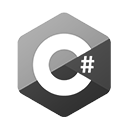https://www.raylib.com/index.html
raylib is highly inspired by Borland BGI graphics lib and by XNA framework. Do you want to see all functions available in raylib? Check cheatsheet
NOTE for ADVENTURERS: raylib is a programming library to enjoy videogames programming; no fancy interface, no visual helpers, no auto-debugging... just coding in the most pure spartan-programmers way. Are you ready to learn? Jump to code examples!
raylib supported platforms
raylib supports multiple target platforms, it has been tested in the following platforms but, technically, any platform that supports C language and OpenGL graphics is valid for raylib or can be very easily ported to.
raylib language bindings
You can code using raylib in multiple languages! Some raylib users have created raylib bindings to multiple languages. Here's a list of the bindings I'm aware of
raylib technologies tools
raylib is the base technology for raylib technologies tools! Several multiplatform portable standalone user-friendly tools have been developed using raylib and raygui. Check them out!
raylib community
Do you need help with raylib? Do you want to keep updated with latest news? Do you want to show your raylib creations? Join our amazing community of raylib developers! Choose the network you prefer! You are welcome!
raylib contributions
I'm working hard on raylib but my resources are limited. If you enjoy raylib and want to help, consider a small donation or contributing to the project on GitHub. Thanks!
raylib features
- NO external dependencies, all required libraries included with raylib
- Multiplatform: Windows, Linux, MacOS, RPI, Android, HTML5... and more!
- Written in plain C code (C99) in PascalCase/camelCase notation
- Hardware accelerated with OpenGL (1.1, 2.1, 3.3 or ES 2.0)
- Unique OpenGL abstraction layer: rlgl
- Powerful Fonts module (XNA SpriteFonts, BMfonts, TTF, SDF)
- Outstanding texture formats support, including compressed formats (DXT, ETC, ASTC)
- Full 3d support for 3d Shapes, Models, Billboards, Heightmaps and more!
- Flexible Materials system, supporting classic maps and PBR maps
- Animated 3d models supported (skeletal bones animation)
- Shaders support, including Model shaders and Postprocessing shaders
- Powerful math module for Vector, Matrix and Quaternion operations: raymath
- Audio loading and playing with streaming support (WAV, OGG, MP3, FLAC, XM, MOD)
- VR stereo rendering support with configurable HMD device parameters
- Huge examples collection with +120 code examples!
- Bindings to +50 programming languages!
- Free and open source. Check [LICENSE].

































Comments
Post a Comment